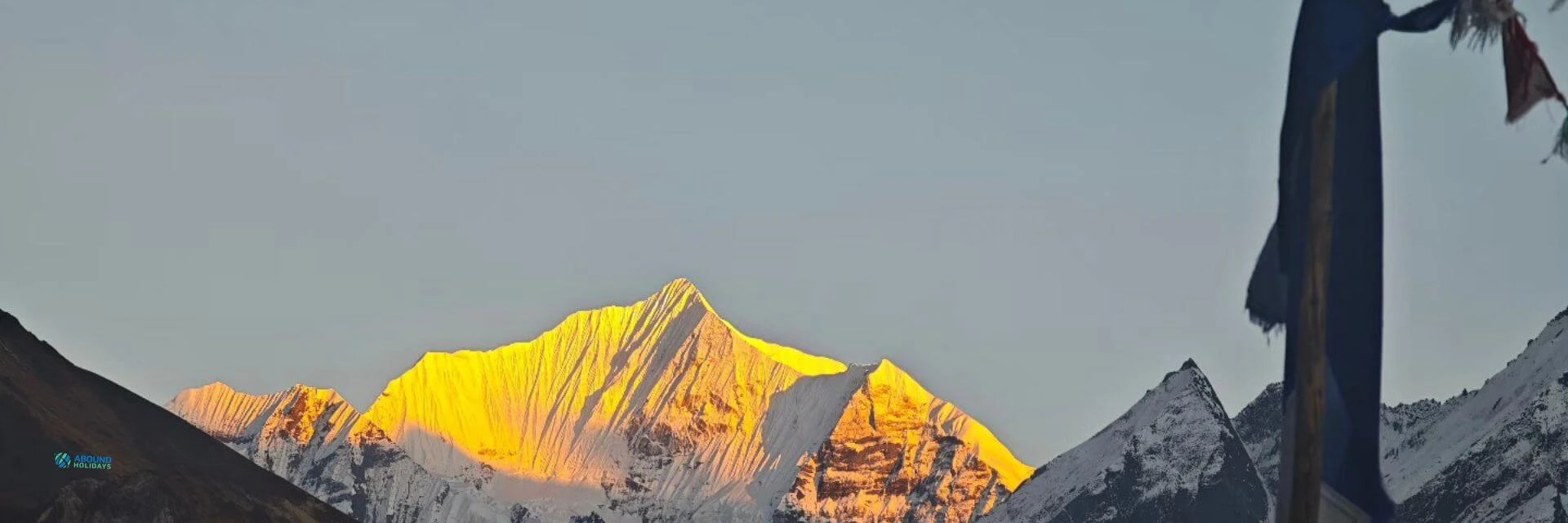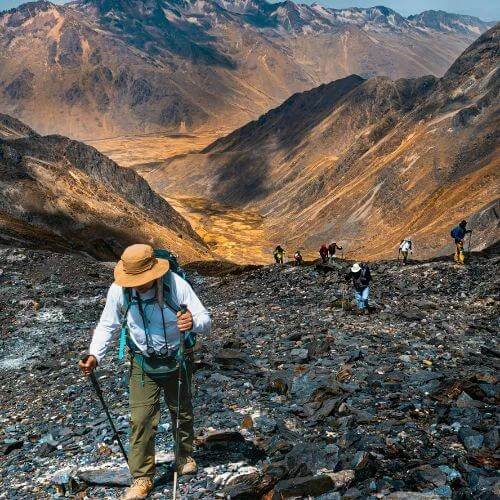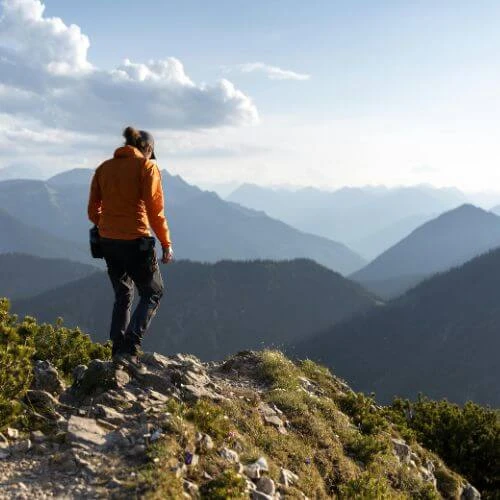Langtang Valley Trek Photography is one of the best ways to experience Nepal’s natural beauty and mountain culture through a camera lens. Just hours north of Kathmandu, the Langtang Valley Trek takes you into a valley filled with peaks, forests, and small Tamang villages. Every corner has something worth capturing including early morning light hitting Langtang Lirung to the colorful prayer flags fluttering in the wind.
This guide by Abound Holidays will help you plan your photography journey in Langtang. You’ll learn about the best photo spots, ideal lighting times, useful camera gear, and photography techniques that bring your images to life. Whether you’re an amateur or a skilled photographer, Langtang Valley Trek Photography will give you stories and shots you’ll want to keep forever.
Why the Langtang Valley Trek is Perfect for Photography
The Langtang Valley is a paradise for photographers who love variety. You’ll walk through deep forests, cross rivers, and climb to viewpoints that open to huge mountain walls. The main peaks that dominate your shots are Langtang Lirung and Ganesh Himal. Their snow faces glow golden during sunrise and turn soft pink at sunset, giving you endless opportunities for stunning frames.
Unlike the Everest or Annapurna region trekking, the Lantang trail is less crowded, allowing you to take your time setting up your shots without the rush. Along the way, you’ll get to meet friendly Tamang people, witness ancient monasteries, and see prayer walls that showcase the stories of faith and tradition. As for wildlife lovers on the route, you will get to see the yaks grazing in high pastures, Himalayan birds, and quiet forest animals, adding depth to your Langtang Valley Trek Photography journey.
With Abound Holidays, you’ll get a local guide who understands both the trekking route and the best places for photography.
Top Photography Locations on the Trek
The Langtang route is packed with stunning locations that photographers dream of. Below are the top stops every Langtang Valley Trek Photography itinerary should include.
1. Syabrubesi to Lama Hotel
Syabrubesi is where your journey begins, as you get surrounded by terraced fields and riverside villages. Early mornings here are great for soft light and misty landscapes which gives a majestic vibe, perfect for photography. The forest trail to Lama Hotel, filled with pine trees and flowers, offers reflecting light that’s perfect for nature shots.
2. Langtang Village and Mundu
Langtang Village, which was rebuilt after the earthquake in 2015, reflects strength and community. The stone houses, grazing yaks, and prayer flags make perfect cultural frames. In the late afternoon, you get to snap the photos of houses and prayer walls that are lighted adding warmth and texture. After Langtang village comes Mundu, which is just ahead, gives wider valley views where you can capture both village life and the mountain background.
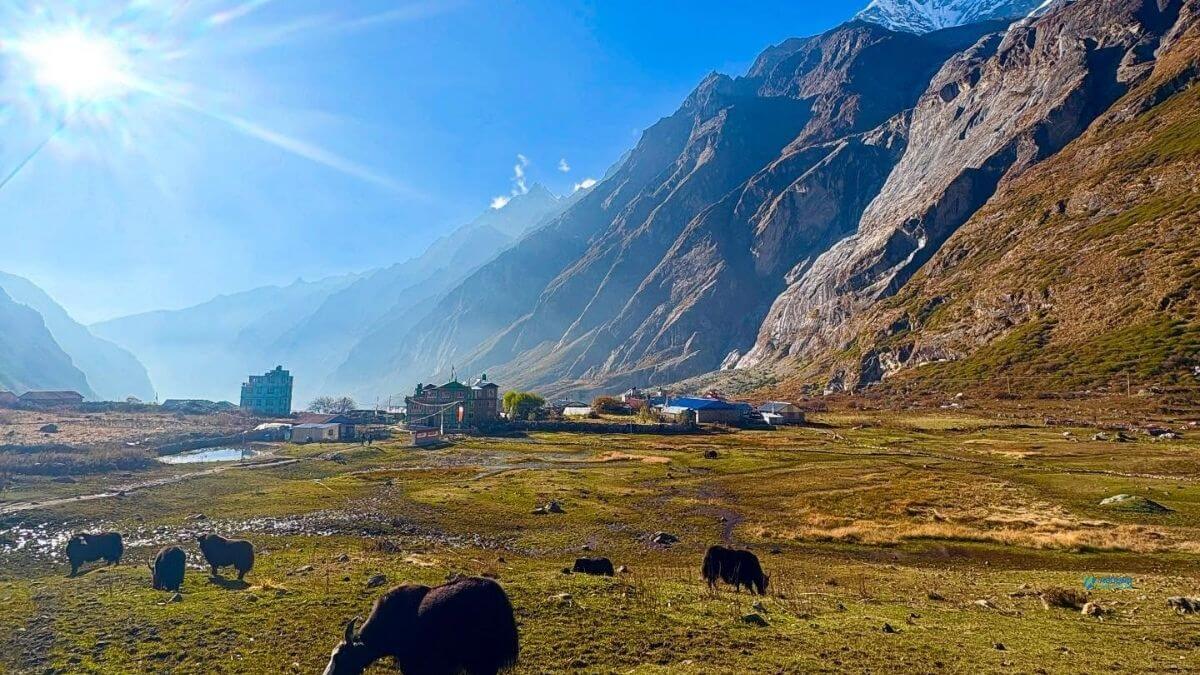
3. Kyanjin Gompa
One of the most photogenic stops of the Langtang Valley Trek Photography, Kyanjin Gompa, sits beneath massive peaks and glaciers. Sunrise and sunset turn the scene magical, as Langtang Lirung and Dorje Lakpa catch golden light. You can photograph prayer flags fluttering around the monastery, monks in their daily routines, and vast panoramas of the valley below.
4. Kyanjin Ri Viewpoint
Climbing to Kyanjin Ri (around 4,773 meters) rewards you with panoramic views that are hard to believe until you see them. This is a classic sunrise spot. Use foregrounds like rock cairns or prayer flags to show the scale of the mountains. During the golden hour, light spills over snow ridges, giving your photos a soft, glowing look.
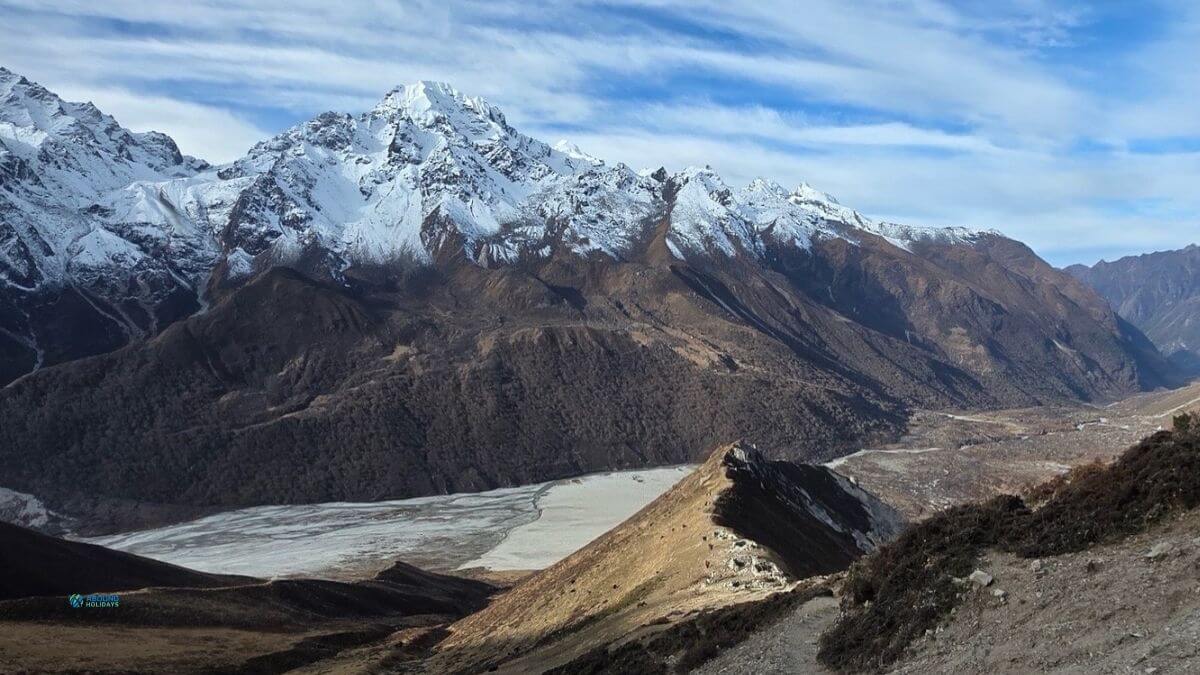
5. Tsergo Ri Summit
Tsergo Ri, at 4,984 meters, is the highest viewpoint on the Langtang Valley Trek and the crown jewel for photographers. From the top, you can see Langtang Lirung, Yala Peak, Dorje Lakpa, and even Shishapangma in Tibet. The best time to photograph here is early morning when the peaks glow warm gold while the valley below stays in shadow. It is a scene every Langtang Valley Trek Photography enthusiast should experience once.
6. Wildlife and Nature Photography
Langtang is home to Himalayan birds, mountain goats, and herds of yaks. A telephoto lens helps you capture them without disturbing their space. Try taking macro shots of flowers or tree bark to show small natural details. Abound Holidays often arranges guided nature walks, where you can learn how to quietly move and photograph wildlife in its natural setting.
Best Time for Photography on the Trek
The best time for Langtang Valley Trek Photography is during peak season like spring ( March - May ) and autumn (Sep - Nov). Timing can make or break your photos. In Langtang Valley Trek Photography, every season has its own charm, but light and visibility vary.
- Spring (March-May) brings rhododendron blooms and fresh greenery. The skies are mostly clear, and the snow peaks shine bright. This is one of the best times to photograph forest trails and colorful hillsides.
- Autumn (Sep-Nov) is the classic photography season. The air feels crisp, the skies stay blue, and the visibility is at its peak. You will get to see fields turning golden, creating perfect contrast against white peaks.
- Winter (December-February) offers dramatic lighting and snowy landscapes. The trek feels quiet, and sunrise shots often show glittering peaks over frozen rivers. The weather is very cold, so make sure to bring extra protection for the camera.
Monsoon (June-August) has heavy rain and low visibility, so it’s often not ideal for photography. Still, misty forests and rain reflections can create moody, artistic images if you’re prepared.
Essential Camera Gear and Settings
Good photos come from good preparation. When it comes to Langtang Valley Trek Photography, your gear should balance quality and weight.
- Camera bodies: A lightweight DSLR or mirrorless camera works best in high altitudes and cold places.
- Use a wide-angle lens for mountain landscapes, portraits, or distant peaks.
- Tripod: A compact one helps with low-light and sunrise shots.
- Accessories: Extra batteries, memory cards, lens cloths, and rain covers are must-haves.
- Settings & tips: Always shoot in RAW for flexibility in editing. Try aperture of around f/8 to f/11 for landscapes, and use the golden hours for soft light. Compose with a foreground object like a prayer flag or rock to add depth.
- Drone options: Drones can capture epic aerial views, but check Langtang National Park regulations and avoid restricted areas.
If you join Abound Holidays’ guided photo trek, we’ll help ensure your gear and setup are safe, even in tough mountain weather.
Planning the Trek for Photographers
Planning is just as important as shooting. A standard Langtang Valley Trek Photography itinerary usually takes 7-10 days, ending at Kyanjin Gompa with side hikes to viewpoints.
You’ll need two main permits: the Langtang National Park entry permit and a TIMS card. Most trekkers start from Kathmandu and drive to Syabrubesi. Accommodation ranges from teahouses to lodges with simple comforts and great views.
Since you’ll be photographing at high altitude, take time to acclimatize, especially around Kyanjin Gompa. This also gives you an extra morning or evening for golden-hour photography. When packing, divide your camera gear carefully between a backpack and padded inserts. Keep batteries close to your body at night to prevent them from freezing.
Abound Holidays manages all these logistics, from transport to accommodation and meals, so you can focus on your photography rather than the planning stress.
Photography Techniques on the Trail
To make your Langtang Valley Trek Photography truly shine, focus on techniques that tell a story, not just a scene.
- Use foreground elements like bridges, trees, or prayer flags to add depth.
- Include people or animals in wide shots to show scale against mountains.
- Try side or backlighting during golden hours to bring warmth to your images.
- Capture a series of shots that blend landscape, culture, and daily life for storytelling.
- Embrace changing weather. Mist, clouds, and rain often create dramatic and emotional images.
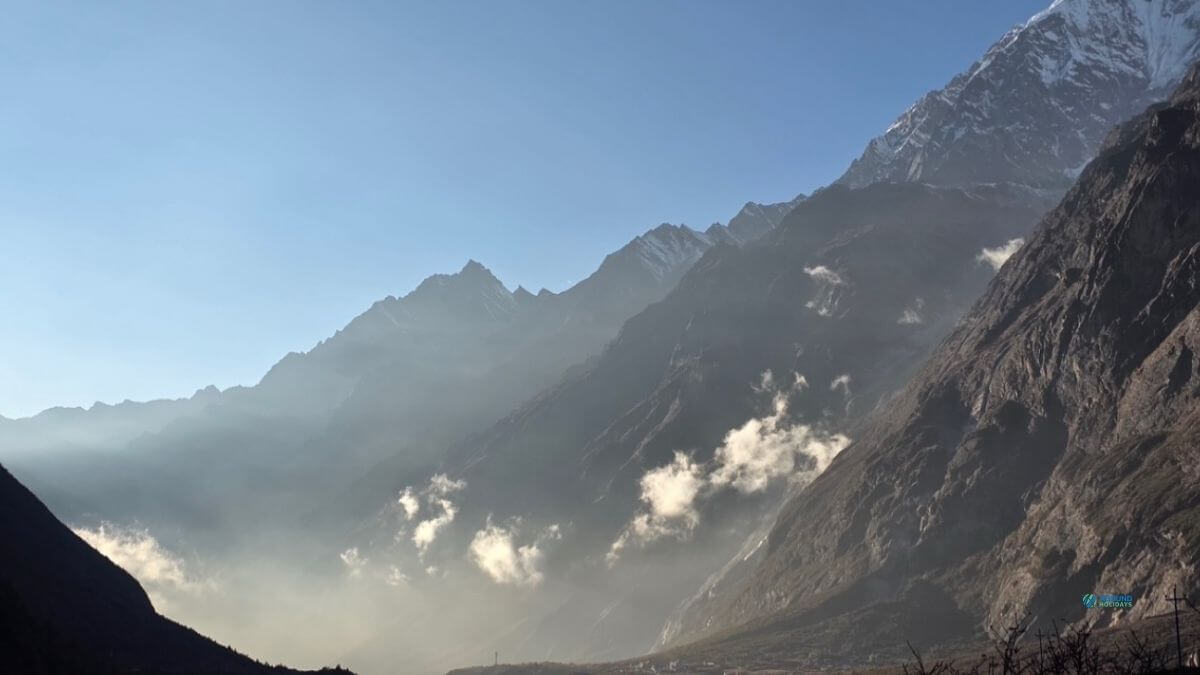
These photography tips help turn ordinary shots into memories that feel alive. Abound Holidays guides also share local insights, helping you capture moments most travelers miss.
Final Thoughts
Langtang Valley Trek Photography is all about feeling connected to the mountains, the people, and the calm beauty around you. Each step on the trail takes you to a frame waiting to be captured, from colorful forests to snowy ridges and smiling locals. With the right timing, proper gear, and creative eye, your photos can tell the story of Nepal’s Langtang region better than words.
If you’re ready to take your photography to the next level, contact us for a guided Langtang Valley Trek Photography tour.
FAQs
1. What is the best time of year for Langtang Valley Trek Photography?
The best time for Langtang Valley Trek Photography is during Spring (March - May) and Autumn (September - November), where there is clear skies, soft light, and colorful scenery.
2. Do I need a guide or porter if I carry heavy camera gear?
Yes, a porter helps manage weight, so you can focus on shooting. Abound Holidays provides experienced guides who understand photographers’ needs.
3. What is the ideal camera gear for high-altitude trekking?
The ideal camera gear for the Langtang Valley Trek would be a mirrorless or DSLR with wide and mid-zoom lenses, a lightweight tripod, spare batteries, and memory cards.
4. Can I fly drones in Langtang National Park?
Drones need permission from park authorities. Abound Holidays can assist in checking updated drone policies.
5. How can I photograph villages and locals respectfully?
Always ask permission, share a smile, and show the picture if possible. Avoid interrupting their work or prayer.
6. What are the best viewpoints for sunrise and sunset photography?
The best viewpoints for sunrise and sunset photography on the Langtang Valley Trek are Kyanjin Ri and Tsergo Ri viewpoints.
7. How do I handle rapidly changing weather for photography?
To handle the rapidly changing weather for photography, make sure to carry rain covers, waterproof bags, and adjust your ISO and shutter settings to match light changes.
